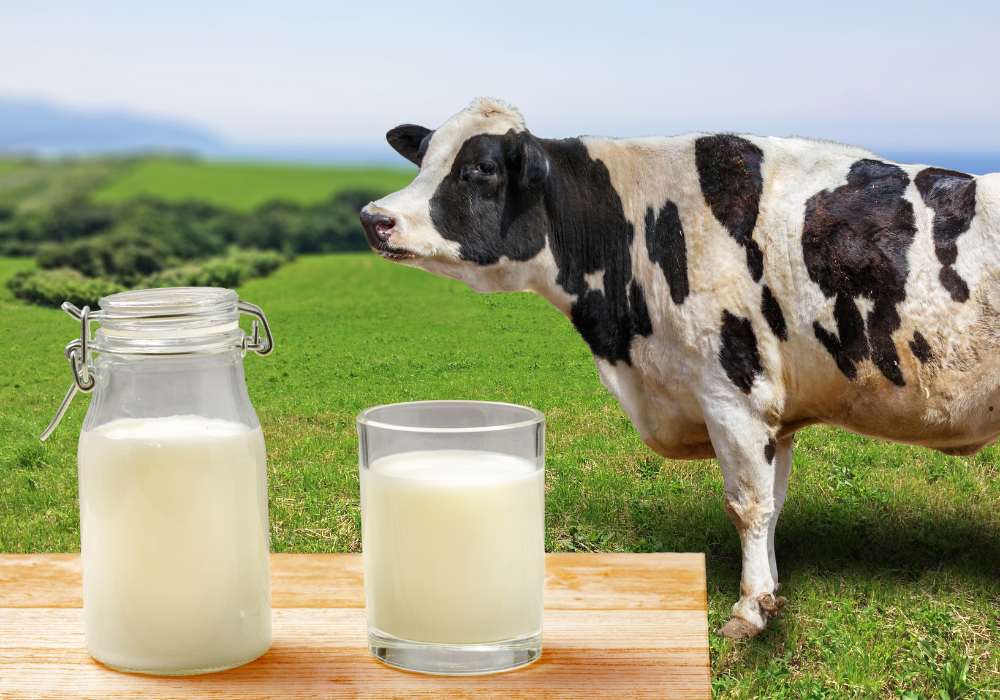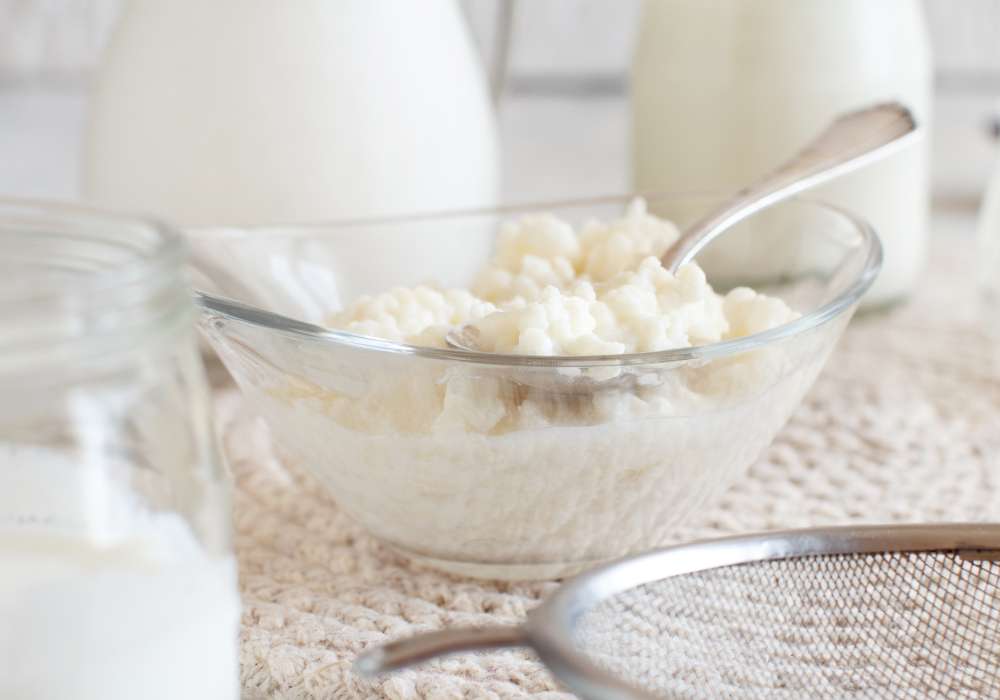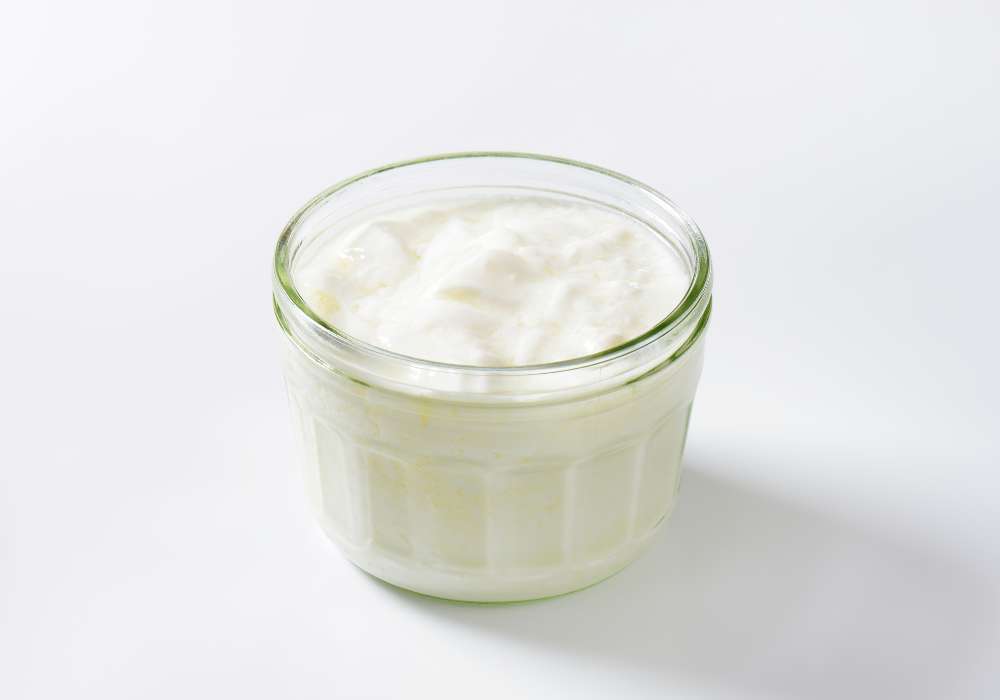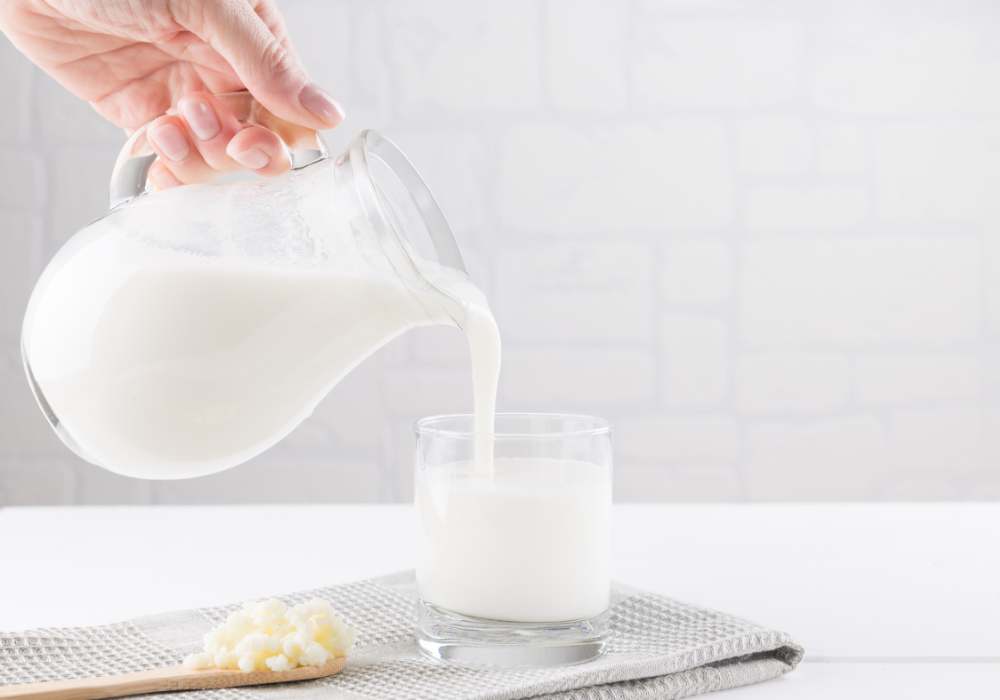What is kefir yogurt?
Kefir yogurt is a fermented dairy product produced by fermenting kefir bacteria and milk. Kefir strain is a living commensal flora containing lactic acid bacteria and yeast. It can convert lactose in milk into lactic acid, thickening the milk and producing a unique flavor. The taste is between yogurt and yogurt, with natural micro-bubbles.
In addition, kefir contains a variety of probiotics that help maintain the balance of flora in the body and has become a part of the daily diet of Europeans.
Materials and tools for making kefir yogurt
- Materials:
Kefir culture (can be obtained from professional merchants or relatives and friends)
Milk (or other milk suitable for fermentation, such as goat milk, soy milk, etc.) - Tools:
Clean glass jar (avoid using metal containers)
Wooden or plastic spoon (metal may affect the bacteria)
Strainer (nylon or plastic material is recommended)
Cotton cloth or kitchen towel, rubber band (to avoid contamination)
Plastic spoon/wooden spoon

What kind of milk can be used to nourish kefir?
- Whole milk:
the most common choice and has the best fermentation effect. - Raw milk:
milk that has been cooled and not otherwise processed. If you are experienced in hand-fermented foods, raw milk is a good choice because raw milk has not been pasteurized at high temperatures and retains all nutrients. However, it is strongly recommended that you must first have relevant knowledge about raw milk. Because raw milk has not been sterilized, the bacteria it contains may cause fermentation to fail. - Skim milk:
Kefir milk made from skim milk will be very watery because it lacks the fat that the bacteria like to eat, which may harm the bacteria in the long run. Therefore, it is recommended that after each use of skimmed milk, please use whole milk for fermentation again to allow the bacteria to replenish fat and restore vitality. - Goat milk:
Goat milk is rich in vitamins and minerals, so the kefir milk produced has high nutritional value and the texture is thinner than cow kefir. - Soy milk:
It is difficult to ferment kefir milk with soy milk. Generally, the fermentation time only takes about 18 hours, and the acidity will not drop much. The acid-base test paper test is not very clear, so you need to observe the texture and taste. Please remember that the bacteria need to consume lactose in milk to grow. After every 6 times of soy milk fermentation, be sure to ferment with milk again to allow the bacteria to replenish energy, otherwise the bacteria will die. - Coconut milk:
The consistency of coconut milk kefir will be a little thinner than that of milk kefir. Please remember that the bacteria need to consume the lactose in milk to grow. Please be sure to use milk for fermentation every 6 times after using plant milk to replenish energy for the bacteria, otherwise the bacteria will die.
When choosing coconut milk, please read the label carefully and do not buy coconut milk with preservatives, because real coconut milk does not require preservatives, and the quality of coconut milk on the market varies. Organic stores are the best place to buy, and 100% pure coconut milk, which is high in fat, is best.

Steps for making kefir yogurt:
- Prepare the bacteria:
usually the bacteria will be soaked in the milk, use a filter to filter out the kefir bacteria, and discard the liquid. - Pour the milk and bacteria:
Put the bacteria and milk into a sterilized glass bottle in proportion. (In summer, the ratio of bacteria to milk is 1:30; in winter, the ratio of bacteria to milk is 1:10) If you are not sure, you can refer to the kefir fermentation calculator we made. - Cover the mouth of the jar:
Cover the mouth of the glass jar with cotton cloth or kitchen towel and secure with a rubber band. Do not seal to allow fermentation gases to escape. - Leave to ferment:
Leave it at room temperature (24°C is best) for about 24 hours, in a cool place indoors, away from direct sunlight. The longer the fermentation time, the more sour the yogurt will taste, and the more probiotics there will be. It can be fermented for up to 36 hours. - During fermentation:
Shake the bottle occasionally to observe the contents to see if milk-water separation begins.
->Successful fermentation: The milk changes texture and becomes thicker, and there is a clear separation between white milky and transparent water.
->Failed fermentation: The texture is still like milk. Cover the paper towel back and continue to ferment for up to 36 hours. Until you find that the milk has been fermented into thick kefir milk. If it is not successful after 36 hours, please discard the liquid inside, do not drink it, and try again. - Filtration and separation:
Please use a spoon to stir and mix the kefir yogurt that has begun to separate, and use a plastic sieve to slowly filter out the bacteria from the milk gram and save it for next use. Refrigerated storage:
The finished kefir yogurt can be consumed directly, and any unfinished portion should be refrigerated.Secondary fermentation:
For those who prefer sour taste, the finished kefir milk can be placed at room temperature for secondary fermentation.

How to tell if kefir fermentation is successful?
Successful Kefir Yogurt:
✔️ Increases in consistency and becomes milky white.
✔️ With a slightly sour, refreshing aroma of lactic acid fermentation.
✔️ There may be a few bubbles on the surface.
Signs of fermentation failure:
❌ The fermentation liquid is too thin and cannot condense.
❌ The taste is too sour or even rotten.
❌ Discoloration, mold or odor.
If mold or odor occurs, discard it immediately and confirm the cleanliness of the fermentation environment and tools.
How to identify dead bacteria?
- Normal kefir strains should be white, beige, granular, and feel rubbery to the touch.
- If the culture changes color and becomes soft, it may have lost its vitality.
- If there is an odor or mold on the surface, it is recommended to replace it with new strains.

How to store kefir yogurt
- Store in the refrigerator:
Kefir yogurt should be stored in the refrigerator at 4°C and will last for about 21 days. - Strain preservation:
If the kefir strain is not used temporarily, it can be refrigerated in milk and the milk should be replaced at least every 3 weeks to maintain viability.
Effects of Kefir Probiotics
- Adjusting the body constitution:
Kefir milk is rich in probiotics, which helps maintain a healthy bacterial ecology. - Calcium supplement:
Milk kefir based on 100% milk can help the development of teeth and bones. - Help digestion:
Research from universities in the United States, Germany and Ireland has found that probiotics can promote digestion and maintain the balance of flora in the body. - Helps you fall asleep:
Calcium and nutrients can relax your body and mind and improve sleep quality.
Welcome to refer to Dr. Berg’s video on Youtube [Drink a glass before bed] - Beauty and Beauty:
High-quality protein and vitamin B complex can nourish the skin and maintain youthful vitality.
⚠️According to Taiwanese regulations, some effects cannot be detailed. For more information, please refer to professional books or YouTube videos
- “The Fairy Gift Keffler” by Professor Lin Qingwen of National Taiwan University
- “The Best Probiotic Food” and “Drink Half a Cup Before Bedtime” Dr. Berg’s probiotic videos










